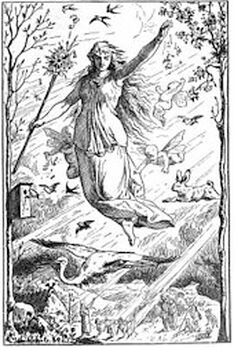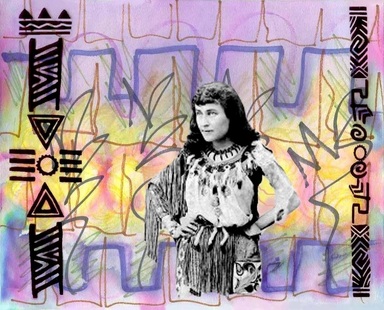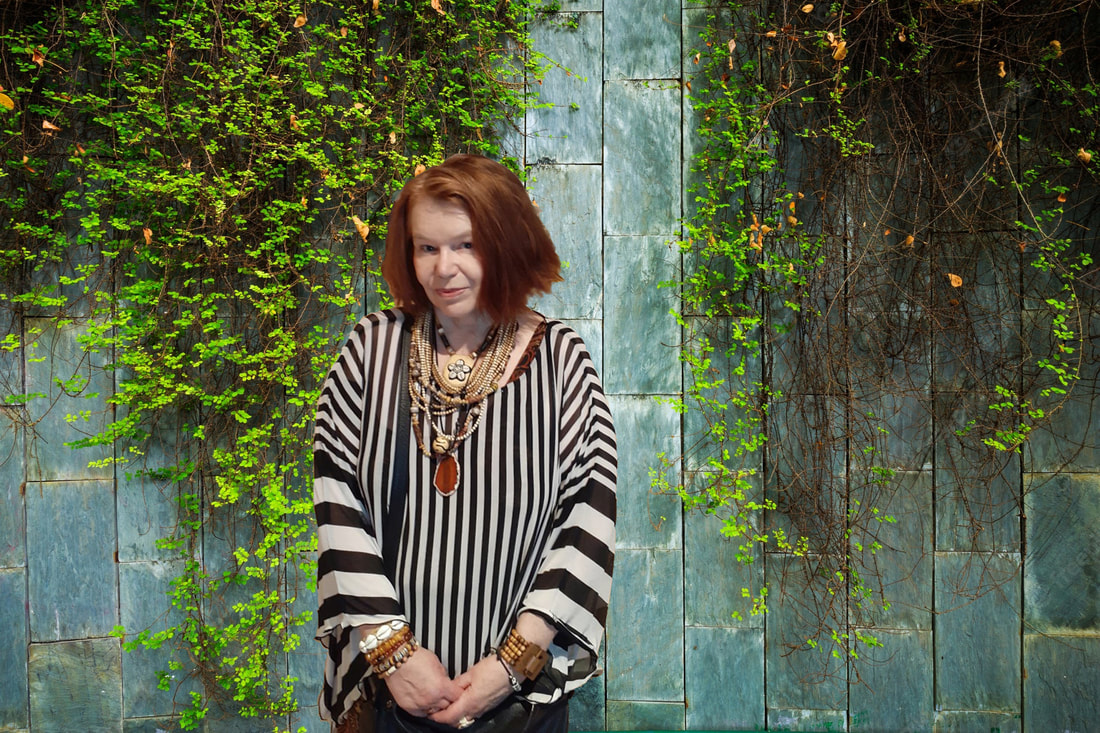PEGI EYERS
Pauline Johnson (Tekahionwake) 1861 – 1913
One of the first women writers to define Canadian literature in our founding years, the iconic Pauline Johnson also made a huge contribution to First Nations oral and written history. Her life is extraordinary given her unique perspective as the daughter of a Haudenosaunee Chief and an English mother, a blend that informed her literary output and theatrical performances within the prevailing Victorian society, and a heightened reverence for her Indigenous traditions and the subtleties of the natural world.
I recently discovered the poem "Easter," written by Pauline Johnson on April 1, 1888, and was thrilled with the inherent imagery of strong feminine forces at play in the cycles of nature, guiding the transformation of early Spring into the warmer days of April. Influenced by the romantic prose of the Victorian era and her genuine connection to the natural world as being conscious and alive, Johnson succeeds in describing the attributes of each season as if they are elementals or animated spirits. Using gentle, yet passionate phrasing, Johnson expresses the yearning of the heart while clearly evoking the mystery, timelessness and dreamlike qualities of wild nature. Giving voice to the processes in nature (called anthropomorphization by western knowledge systems), discovering the beauty of the wild and expressing this adoration was the intrinsic purpose of poetry for Pauline Johnson.
One of the first women writers to define Canadian literature in our founding years, the iconic Pauline Johnson also made a huge contribution to First Nations oral and written history. Her life is extraordinary given her unique perspective as the daughter of a Haudenosaunee Chief and an English mother, a blend that informed her literary output and theatrical performances within the prevailing Victorian society, and a heightened reverence for her Indigenous traditions and the subtleties of the natural world.
I recently discovered the poem "Easter," written by Pauline Johnson on April 1, 1888, and was thrilled with the inherent imagery of strong feminine forces at play in the cycles of nature, guiding the transformation of early Spring into the warmer days of April. Influenced by the romantic prose of the Victorian era and her genuine connection to the natural world as being conscious and alive, Johnson succeeds in describing the attributes of each season as if they are elementals or animated spirits. Using gentle, yet passionate phrasing, Johnson expresses the yearning of the heart while clearly evoking the mystery, timelessness and dreamlike qualities of wild nature. Giving voice to the processes in nature (called anthropomorphization by western knowledge systems), discovering the beauty of the wild and expressing this adoration was the intrinsic purpose of poetry for Pauline Johnson.
 Ostara by Johannes Gehrts, 1884
Ostara by Johannes Gehrts, 1884 As we engage in the current Mother Earth recovery project and a return to ecocentric values, we can learn much from the animistic dedication, respect and enjoyment of the natural world that Pauline experienced. Recognizing the strong feminine energies in Pauline’s poem "Easter," I like to imagine that she was aware of the power of the Divine Feminine in the spiraling aspects and cycles of all life. Feeling a strong soul-sister connection that transcends time and space, I took the liberty of changing two Christian words that appear in the poem; “Lent” to “Imbolc” and the word “Easter” to “Ostara”. These simple alterations miraculously birth the poem anew as an expression of Goddess Spirituality and the pagan Rites of Spring. I humbly offer this revisitation with respect and the tenderness of hope, that perhaps Pauline would have approved.
Easter
Pauline Johnson ~ April 1, 1888
Imbolc gathers up her cloak of sombre shading
In her reluctant hands.
Her beauty heightens, fairest in its fading,
As pensively she stands
Awaiting Ostara’s benediction falling,
Like silver stars at night,
Before she can obey the summons calling
Her to her upward flight,
Awaiting Ostara’s wings that she must borrow
Ere she can hope to fly –
Those glorious wings that we shall see to-morrow
Against the far, blue sky.
Has not the purple of her vesture’s lining
Brought calm and rest to all?
Has her dark robe had naught of golden shining
Been naught but pleasure’s pall?
Who knows? Perhaps when to the world returning
In youth’s light joyousness,
We’ll wear some rarer jewels we found burning
In Imbolc’s black-bordered dress.
So hand in hand with fitful March she lingers
To beg the crowning grace
Of lifting with her pure and holy fingers
The veil from April’s face.
Sweet, rosy April – laughing, sighing, waiting
Until the gateway swings,
And she and Imbolc can kiss between the grating
Of Ostara’s tissue wings.
Too brief the bliss – the parting comes with sorrow.
Good-bye dear Imbolc, good-bye!
We’ll watch your fading wings outlined to-morrow
Against the far blue sky.
Pauline Johnson ~ April 1, 1888
Imbolc gathers up her cloak of sombre shading
In her reluctant hands.
Her beauty heightens, fairest in its fading,
As pensively she stands
Awaiting Ostara’s benediction falling,
Like silver stars at night,
Before she can obey the summons calling
Her to her upward flight,
Awaiting Ostara’s wings that she must borrow
Ere she can hope to fly –
Those glorious wings that we shall see to-morrow
Against the far, blue sky.
Has not the purple of her vesture’s lining
Brought calm and rest to all?
Has her dark robe had naught of golden shining
Been naught but pleasure’s pall?
Who knows? Perhaps when to the world returning
In youth’s light joyousness,
We’ll wear some rarer jewels we found burning
In Imbolc’s black-bordered dress.
So hand in hand with fitful March she lingers
To beg the crowning grace
Of lifting with her pure and holy fingers
The veil from April’s face.
Sweet, rosy April – laughing, sighing, waiting
Until the gateway swings,
And she and Imbolc can kiss between the grating
Of Ostara’s tissue wings.
Too brief the bliss – the parting comes with sorrow.
Good-bye dear Imbolc, good-bye!
We’ll watch your fading wings outlined to-morrow
Against the far blue sky.
mixed-media by Pegi Eyers
| Pegi Eyers is also the author of Ancient Spirit Rising: Reclaiming Your Roots & Restoring Earth Community, an award-winning book that explores social justice, nature spirituality, the ancestral arts, and resilience in times of massive change. www.stonecirclepress.com |



